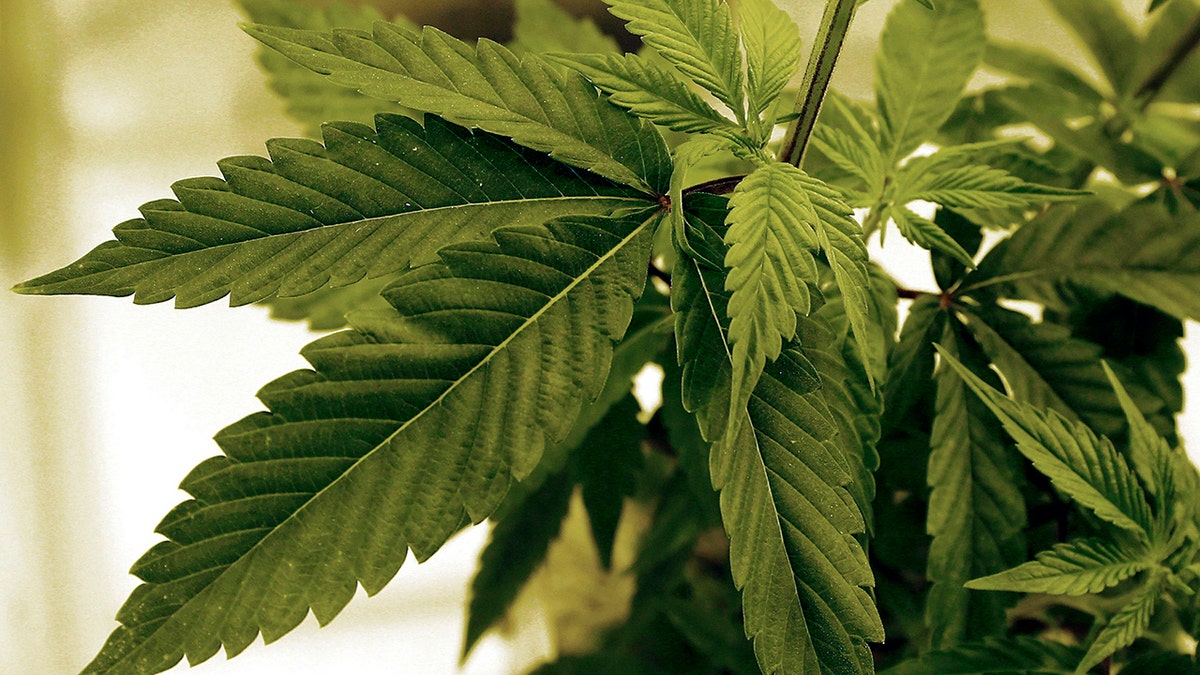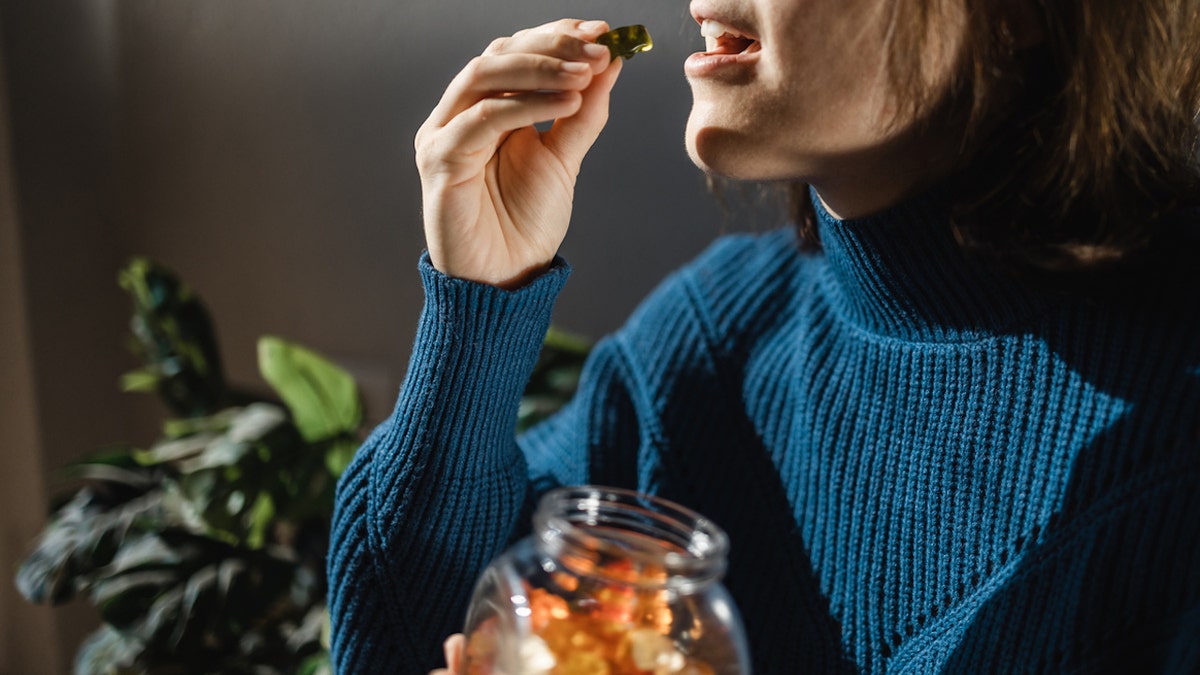Does high-THC cannabis cause psychosis?
Fox News medical contributor Dr. Marc Siegel discusses the association of cannabis potency with mental illness and addiction on 'The Ingraham Angle.'
The fastest growing population to try marijuana these days is not rebellious teenagers.
Guess again.
New research from the National Survey on Drug Use and Health, an annual federal report that began over 50 years ago to provide up-to-date data on the use of tobacco, alcohol and illicit drugs as well as mental health in the United States, has a very different finding.
Instead, it's people age 65 and older who are experimenting with marijuana more than any other age group.
GREATER NUMBERS OF WOMEN ARE DYING OF ALCOHOL-RELATED CONDITIONS, STUDY FINDS
The number has actually tripled since 2009, from 11% to 32% in 2019.
The numbers of older Americans trying pot increased further to 35% in 2021, the researchers noted, because the survey methodology changed during the pandemic.

Several factors are driving cannabis use among older Americans, a New York City-based psychiatrist told Fox News Digital. These include "a combination of physical ailments, the increased cultural acceptance of marijuana and the marketing efforts aimed at promoting marijuana as a therapeutic agent." (AP Photo/Jim Mone, File)
In the slightly younger 60-64 demographic, more than half reported cannabis use.
"For seniors, experimenting with marijuana for the first time is driven" by several factors, Dr. Elie G. Aoun, addiction and forensic psychiatrist at Columbia University in New York City, told Fox News Digital.
These include "a combination of physical ailments, the increased cultural acceptance of marijuana and the marketing efforts aimed at promoting marijuana as a therapeutic agent," added Aoun, who is also a member of the American Psychiatric Association board of trustees.
"Marijuana is the most commonly used federally illegal drug in the United States."
He noted that older people are experimenting with the drug "despite the lack of evidence to support its wide use."
More than a decade ago, only 1% of people 65 and older reported having used marijuana in the past month compared to five times that number in 2021.
WANT TO LOWER YOUR RISK OF DYING? GETTING A GOOD NIGHT'S SLEEP IS MORE URGENT THAN EVER
As Minnesota became the 23rd state to legalize cannabis in June, a majority of adults in virtually every other age group have experimented with it at least once, according to the survey.
Baby boomers retiring
"Marijuana — which can also be called cannabis — is the most commonly used federally illegal drug in the United States, with an estimated 48.2 million people using it in 2019," according to the website of the Centers for Disease Control and Prevention.
It has several other names, including weed, pot or dope, inspired by parts of the cannabis plant — which has more than 100 compounds, including tetrahydrocannabinol (THC), which can be mind-altering.
It also contains other active compounds, such as cannabidiol (CBD), that do not cause a "high."

As legalization and dispensaries have dampened the stigma attached to recreational marijuana in recent years, more Americans of an older age are trying the drug for more practical purposes such as sleep and pain control, a new report has found. (Cyberguy.com)
"Cannabis use in the population over 65 was rare until recently, as baby boomers reached these ages," William C. Kerr, scientific director of the nonprofit Alcohol Research Group at the Public Health Institute in Emeryville, CA, told Fox News Digital.
Although many older Americans have tried the drug, most don’t do use it regularly.
HEADS UP ON MIGRAINES AS EXPERT REVEALS TIPS FOR FINDING RELIEF FROM DEBILITATING PAIN
Some 5% of those over 65 and 10% of those ages 60-64 reported marijuana use in the past month in 2021, compared to 24% of young adults.
Although many older Americans have tried the drug, most don’t do use it regularly.
Many Americans in the baby boom generation tried marijuana as they became young adults in the 1970s when drug experimentation was in vogue, with 36% of those 18-25 smoking marijuana in the past month in 1979, according to the report.
But the numbers plummeted in the 1980s after President Ronald Reagan passed the Anti-Drug Abuse Act that increased penalties for drug possession.
This prompted older Americans to avoid the drug for decades after, in part because of the stigma that became attached to it.
A need 'to understand unique issues’
But as legalization and dispensaries have dampened the stigma attached to the recreational drug in recent years, more older Americans are trying the drug for more practical purposes such as sleep and pain control.
Yet there is limited scientific evidence, warns the CDC, that supports the idea that the drug effectively treats most types of acute or chronic pain — despite pain control being one of the most common reasons for using the drug.

There is a need for research to understand unique issues for this older group of Americans, such as interactions with health problems and medications. (iStock)
"So there is a need for research to understand unique issues for this group such as interactions with health problems and medications," Kerr told Fox News Digital.
Older generations before baby boomers, such as the silent generation, who grew up before recreational weed was commonplace are still skeptical about its recreational use, per a recent report.
As of last year, only 30% of those over age 75 support legalizing its recreational use, compared to 53% of Americans in the 65-74 age group, which rivals the national average, according to a Pew Research survey.
Impaired driving, poisoning, unexpected intoxicating effects
"After alcohol, marijuana is the substance most often associated with impaired driving," the CDC cautioned on its website.
And the way people use marijuana may also place individuals at greater risk.
Edibles, which are food or drinks infused with marijuana, have a greater risk of poisoning, compared to smoking marijuana, said the same source.

Edibles infused with marijuana have a greater risk of poisoning, compared to smoking marijuana, according to the CDC. (iStock)
They may take anywhere from half an hour to up to two hours to take effect, so people may unknowingly eat too much, which can lead to poisoning or serious injury, according to the CDC.
The exact amount of THC is often difficult to measure.
The intoxicating effects may also last longer than expected, depending on the interactions with other medications people are taking, the food they recently ingested and the specific amount they used.
CLICK HERE TO SIGN UP FOR OUR HEALTH NEWSLETTER
Additionally, the exact amount of THC is often also difficult to measure, so people may be surprised by their strength and how long they last in the body, the CDC added.
CLICK HERE TO GET THE FOX NEWS APP
As metabolism slows down as people get older and with many older adults on multiple medications, this particular population needs to be extra cautious when using marijuana to avoid unpleasant and potentially harmful side effects.





















